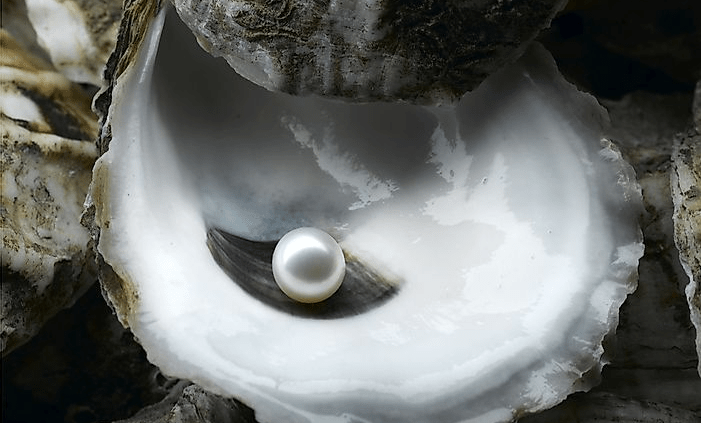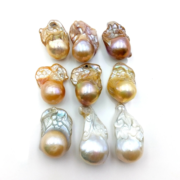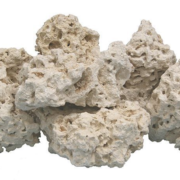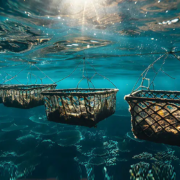Gems of the Sea: Exploring Pearls and Coral
Welcome to the fascinating world of Gems of the Sea, where we delve into the enchanting realms of pearls and coral. These treasures of the ocean have captivated human imagination for centuries, symbolizing beauty, luxury, and cultural significance across civilizations.

Pearls, formed within the delicate embrace of mollusks, are renowned for their lustrous sheen and timeless elegance. From ancient myths to modern haute couture, pearls have adorned royalty, symbolized purity, and adorned jewelry fit for the most opulent occasions. Their allure lies not only in their exquisite appearance but also in the mystery of their creation beneath the waves.
In contrast, coral reefs, built by tiny marine organisms over millennia, are vibrant ecosystems teeming with life beneath the ocean’s surface. The striking hues of coral have inspired artists and designers, while their ecological importance cannot be overstated. Yet, coral holds a deeper significance in various cultures, where it symbolizes protection, longevity, and even magical properties.
Throughout history and across cultures, pearls and coral have held a special place, whether as symbols of wealth and status or as talismans of protection and prosperity. Join us as we embark on a journey to explore the rich tapestry of myths, legends, and traditions woven around these mesmerizing gems of the sea.
Contents
- Formation and Origins
- Types and Varieties:
- Historical and Cultural Significance
- Harvesting and Sustainability
- Economic Importance
- Jewelry and Fashion
Formation and Origins

Pearl Formation Process: Pearls are formed inside the soft tissue of certain mollusks, such as oysters and mussels, as a defense mechanism against irritants. When an irritant, such as a grain of sand or a parasite, enters the mollusk’s shell, the animal secretes layers of nacre (a combination of calcium carbonate and protein) around the irritant to protect itself. Over time, layer upon layer of nacre builds up, forming a pearl. This process can take several years, resulting in pearls of varying sizes, shapes, and colors.
 How Are Coral Reef Formed? (scienceabc.com)
How Are Coral Reef Formed? (scienceabc.com)
Coral Formation and Growth: Coral reefs are formed by colonies of tiny marine animals called polyps, which belong to the class Anthozoa. These polyps secrete calcium carbonate to form hard skeletons that provide support and structure for the coral colonies. Over time, as the polyps grow and reproduce, they create vast underwater ecosystems of interconnected reefs. Coral growth rates can vary depending on factors such as water temperature, light levels, and nutrient availability, but generally, coral reefs grow relatively slowly, with some reefs taking thousands of years to form.
Natural Habitats and Geographical Distribution: Pearls are primarily found in shallow, coastal waters around the world, where the mollusks that produce them inhabit sandy or rocky seabeds. Some of the most renowned pearl-producing regions include the Persian Gulf, the waters off the coast of Japan, the South Pacific islands, and parts of Central and South America.
Coral reefs thrive in warm, tropical waters with clear, sunlit conditions, typically between 23°C and 29°C (73°F to 84°F). As a result, coral reefs are found in the shallow waters of tropical regions around the globe, including the Caribbean Sea, the Great Barrier Reef in Australia, the Coral Triangle in Southeast Asia, and the Red Sea. These reefs form some of the most diverse and ecologically important ecosystems on Earth, supporting a wide array of marine life.
Understanding the formation processes and natural habitats of pearls and coral provides insight into their unique characteristics and cultural significance, as well as the importance of conserving these precious resources for future generations.
Types and Varieties:
Types of Pearls:

- Natural Pearls: Formed spontaneously in the wild, natural pearls are rare and highly valued for their unique shapes, colors, and luster. They are produced without human intervention and are often found in various species of mollusks, including oysters and mussels.
- Cultured Pearls: Cultured pearls are created through a process where a pearl farmer inserts an irritant, such as a bead or piece of mantle tissue, into a mollusk to stimulate pearl production. The mollusk then forms layers of nacre around the irritant, resulting in a cultured pearl. These pearls make up the majority of pearls available on the market today and come in a wide range of sizes, shapes, and colors.
- Freshwater Pearls: Produced by freshwater mussels, freshwater pearls are typically irregular in shape and come in a variety of colors, including white, pink, and lavender. They are often more affordable than saltwater pearls and are known for their natural beauty and luster.
Types of Coral:

- Hard Coral: Also known as stony coral, hard coral forms the backbone of coral reefs. These corals secrete calcium carbonate to create hard skeletons that provide support and structure for the reef. Hard coral colonies come in a variety of shapes and sizes and play a crucial role in the formation and growth of coral reefs.
- Soft Coral: Soft corals, also called gorgonians or octocorals, lack the hard calcium carbonate skeletons found in hard corals. Instead, they have a flexible, fleshy skeleton made of a protein called gorgonin. Soft corals come in a wide range of shapes and colors and are known for their graceful, flowing appearance.
- Black Coral: Black coral is a type of deep-water coral known for its distinctive black or dark brown skeleton. Unlike shallow-water corals, black corals thrive in deep, cold waters and can be found at depths of up to several hundred meters. Black coral is highly valued for use in jewelry and decorative items but is also vulnerable to overexploitation due to its slow growth rates.
Notable Species and Characteristics:
- Akoya Pearls: Cultivated primarily in Japan and China, Akoya pearls are known for their round shape, high luster, and white to cream coloration. They are among the most classic and sought-after pearls in the world.
- Tahitian Pearls: Cultivated in French Polynesia, Tahitian pearls are prized for their exotic colors, ranging from dark charcoal gray to peacock green and even shades of blue and purple. They are typically larger in size compared to other types of pearls and have a unique, iridescent luster.
- Great Barrier Reef: The Great Barrier Reef off the coast of Australia is the largest coral reef system in the world, spanning over 2,300 kilometers (1,400 miles). It is home to a stunning diversity of coral species, as well as countless marine organisms, making it one of the most biodiverse ecosystems on the planet.
- Red Coral: Red coral, also known as precious coral, is prized for its vibrant red color and has been used in jewelry and decorative items for thousands of years. It is primarily found in the Mediterranean Sea, where it forms large colonies on rocky seabeds.
Understanding the various types and varieties of pearls and coral provides insight into their unique characteristics and cultural significance, as well as the importance of conservation efforts to protect these precious resources for future generations.
Historical and Cultural Significance
Pearls in Ancient Civilizations: Pearls have held a prominent place in the cultures and societies of ancient civilizations across the globe. In ancient Egypt, pearls were highly prized and often associated with the goddess Isis, symbolizing purity and divine power. Egyptian royals and elite members of society adorned themselves with pearls as symbols of wealth and status.
Similarly, in ancient Rome, pearls were considered symbols of luxury and status. Roman women often wore pearl jewelry as a display of their wealth and social standing. The Roman general Vitellius is said to have financed an entire military campaign by selling just one of his mother’s pearl earrings.
Symbolism and Cultural Meanings: Throughout history, pearls have been imbued with various symbolic meanings across cultures. In many societies, pearls have represented purity, innocence, and beauty. They have also been associated with wealth, prosperity, and fertility, leading to their widespread use in bridal attire and wedding traditions.
In some cultures, pearls were believed to possess mystical properties and protective powers. In ancient China, pearls were thought to protect wearers from harm and evil spirits, while in Hindu mythology, pearls were associated with the moon and considered sacred gems.
Coral in Mythology and Folklore: Coral has a rich history of mythological and folkloric associations, often linked to its vibrant colors and unique growth patterns. In ancient Greek mythology, coral was said to be formed from the blood of Medusa, the Gorgon whose gaze could turn people to stone. According to legend, when Perseus beheaded Medusa, her blood dripped into the sea and turned into coral.
In other cultures, coral has been associated with protection, healing, and fertility. In Mediterranean folklore, coral was often worn as an amulet to ward off the evil eye and protect sailors from shipwrecks. In Italian folklore, it was believed that coral could protect children from harm and promote healthy growth.
Overall, pearls and coral have played significant roles in shaping the cultural beliefs, traditions, and customs of societies throughout history. Whether prized for their beauty, symbolic meanings, or mythical associations, these gems of the sea continue to captivate the imagination and inspire awe across cultures and generations.
Harvesting and Sustainability
Traditional Pearl Diving Methods: Historically, pearl diving was a perilous but lucrative occupation practiced in regions such as the Persian Gulf, the Red Sea, and parts of Asia. Divers would plunge into the depths of the ocean, often without modern diving equipment, to search for oysters containing natural pearls. This ancient practice required considerable skill and endurance and was fraught with dangers such as drowning, shark attacks, and decompression sickness.
Modern Pearl Farming Techniques: With the decline in natural pearl production and advances in aquaculture technology, modern pearl farming has become the primary method of pearl production. Pearl farmers cultivate pearls through a process known as pearl farming or pearl culturing. This involves implanting a nucleus, usually a small bead made from shell or plastic, into the mantle tissue of a mollusk. The mollusk then secretes layers of nacre around the nucleus, gradually forming a pearl.
Pearl farming techniques vary depending on the type of pearl being cultivated, whether it’s saltwater pearls like Akoya and South Sea pearls or freshwater pearls. These techniques include suspended farming, where oysters are kept in cages or nets suspended in the water, and bottom farming, where oysters are placed on racks or trays on the seabed or lake floor.
Environmental Concerns and Sustainability Efforts: While pearl farming has reduced the pressure on wild pearl oyster populations, it is not without its environmental impacts. Intensive pearl farming can lead to habitat degradation, pollution, and the introduction of invasive species. Additionally, some pearl farming practices, such as the use of antibiotics and pesticides, can harm marine ecosystems and contribute to water pollution.
To address these concerns, efforts are underway to promote sustainable pearl farming practices and reduce the industry’s environmental footprint. This includes initiatives to minimize pollution, improve waste management, and reduce reliance on harmful chemicals. Some pearl farms also engage in conservation efforts, such as restoring damaged coral reefs and protecting marine biodiversity.
Furthermore, consumer awareness and demand for sustainably sourced pearls have prompted some pearl producers to adopt eco-friendly practices and pursue certifications such as the Marine Stewardship Council (MSC) certification for responsible aquaculture. By promoting transparency and accountability in the pearl industry, these efforts aim to ensure the long-term viability of pearl farming while preserving the health of marine ecosystems for future generations.
Economic Importance
The economic importance of pearls and coral is significant, encompassing various sectors such as jewelry, tourism, aquaculture, and conservation efforts.
- Jewelry Industry: Pearls have long been prized for their beauty and rarity, making them highly sought after in the jewelry market. From elegant pearl necklaces to intricate pearl earrings and bracelets, pearl jewelry remains a staple of luxury fashion and a symbol of sophistication and elegance. The demand for pearls drives a lucrative global market, with prices varying based on factors such as size, shape, color, and luster.
- Tourism: Coral reefs are major attractions for tourists worldwide, drawing millions of visitors each year to destinations like the Great Barrier Reef, the Caribbean, and Southeast Asia. Coral reefs support a vibrant marine ecosystem, offering opportunities for activities such as snorkeling, scuba diving, and eco-tourism. Coral reef tourism generates significant revenue for coastal communities through visitor spending on accommodations, guided tours, diving expeditions, and souvenir purchases.
- Aquaculture: Pearl farming represents a thriving aquaculture industry, particularly in countries like Japan, China, Australia, and French Polynesia. Modern pearl farming techniques have made it possible to cultivate pearls on a commercial scale, providing employment opportunities and income for thousands of pearl farmers and workers worldwide. Cultured pearls, including freshwater and saltwater varieties, contribute substantially to global pearl production and trade.
Overall, pearls and coral play essential roles in global economies, supporting livelihoods, driving commerce, and promoting environmental conservation and sustainable development initiatives. By recognizing their economic importance and implementing measures to protect and manage these precious resources responsibly, stakeholders can ensure their continued contribution to local economies and ecosystems for generations to come.
Jewelry and Fashion

Pearls and coral have long been cherished in the world of jewelry and fashion, adding a touch of elegance, sophistication, and natural beauty to a wide range of accessories and attire.
- Pearl Jewelry: Pearls have been a staple of jewelry design for centuries, adorning everything from classic pearl necklaces and earrings to modern, avant-garde creations. Pearl jewelry exudes timeless charm and versatility, suitable for both formal occasions and everyday wear. Whether in the form of traditional Akoya pearl strands, lustrous South Sea pearl pendants, or colorful Tahitian pearl bracelets, pearls continue to captivate fashion enthusiasts and jewelry connoisseurs alike with their radiant luster and understated allure.
- Coral Jewelry: Coral’s vibrant colors and unique textures make it a popular choice for statement jewelry pieces that add a pop of color and personality to any ensemble. From intricate coral necklaces and bold cuff bracelets to delicate coral earrings and cocktail rings, coral jewelry showcases the natural beauty and organic shapes of this precious marine material. Coral jewelry designs often draw inspiration from marine motifs and coastal aesthetics, reflecting a connection to the sea and a love for nature’s wonders.
- Fashion Trends: Pearls and coral frequently feature in fashion trends, whether as accents on clothing, embellishments on accessories, or motifs in jewelry designs. In recent years, pearls have experienced a resurgence in popularity, with designers incorporating them into contemporary fashion pieces such as pearl-embellished denim jackets, pearl-studded sneakers, and pearl-adorned hair accessories. Coral-inspired prints, patterns, and textures also make frequent appearances in fashion collections, reflecting a growing appreciation for marine-inspired aesthetics and sustainable fashion choices.
- Bridal Jewelry: Pearls are a traditional choice for bridal jewelry, symbolizing purity, innocence, and eternal love. Brides often wear pearl necklaces, earrings, bracelets, or hair accessories to complement their wedding attire and add a touch of elegance to their bridal ensemble. Coral jewelry, with its vibrant hues and organic shapes, can also make stunning bridal accessories, particularly for beach or destination weddings where a tropical, seaside vibe is desired.
Overall, pearls and coral play integral roles in the world of jewelry and fashion, offering endless possibilities for creative expression and personal style. Whether adorning red carpet gowns, runway looks, or everyday ensembles, these timeless treasures from the sea continue to inspire designers, artisans, and fashion enthusiasts around the globe.






Leave a Reply
Want to join the discussion?Feel free to contribute!